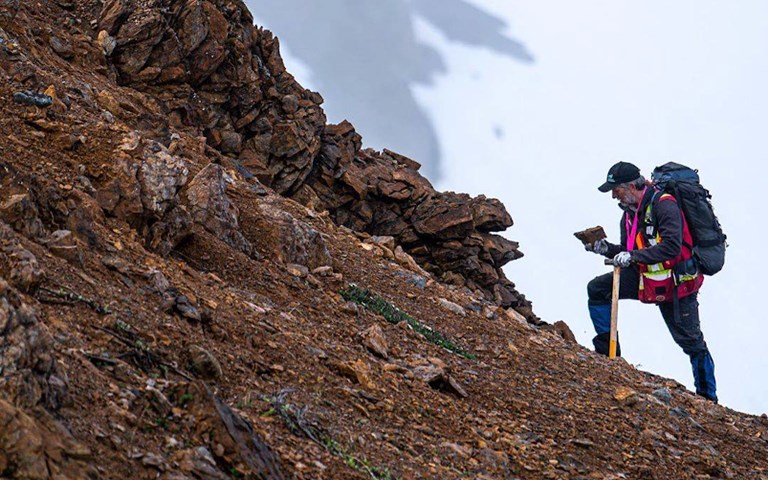Exploration in B.C.’s Chachi Corridor. Courtesy of Anatole Tuzlak
Mineral exploration companies in British Columbia are heading into the field this summer after months of sheltering in place. But in the midst of a global pandemic, what will exploration camps look like?
Governments, industry organizations and companies continue to release and develop new COVID-19 health and safety protocols to protect communities and control the spread of the virus. In May, the provincial government announced that all workplaces would be required to have a COVID-19 safety plan before resuming or beginning work. The government’s mining ministry also mandated that all camps develop their own prevention and control protocols for the virus and released a guidance for COVID-19 mining health and safety.
According to the guidance, mines and exploration camps are directed to limit the amount of people in the same space, including common areas such as cafeterias and sleeping quarters, to a maximum of 50 people. The document also specifies that employees maintain a distance of two metres from one another both during and outside of work hours. Other directions include limiting elevator capacity to four people at a time, increasing the number of hand-washing stations and reducing in-person meetings and when necessary, holding site meetings in open spaces or outside.
According to Kendra Johnston, president and CEO of the Association for Mineral Exploration (AME), maintaining physical distancing will be paramount and will change how camps are organized.
“The main thing is going to be organizing camp in a way that allows for physical distancing,” Johnston says. “Thinking about sleeping quarters and tents for example, typically we would put four people in a 14-by-16 tent to sleep. Maybe now we’ll have to hang sheets from the top of the tent down in between beds to make quadrants within the tents.”
For Andy Randell, geologist at Strata GeoData, maintaining physical distancing at camp will be the biggest challenge this season. “[Distancing is] hard to do in a camp,” said Randell. “It’s a very tight environment. You could be on the side of a mountain and have all the space in the world yet in camp you’re all clustered in one little space.”
“We’re putting together a field camp right now with 10 people, and we’re actually wondering if the footprint in our permit is going to be enough for us to be able to separate tents and give everybody their own space. There’s those kinds of considerations as well. It just takes a little bit of thinking and a little bit of planning to overcome it.”
Related: British Columbia to strengthen industry accountability with changes to Mines Act
New protocols on bringing workers to and from camps will largely depend on screening employees before any travelling, either by asking health-related questions or conducting temperature screening. “The other piece that’s going to be really important is making sure that we’re looking after our First Nations partners and not putting them in harm’s way by travelling through their communities and potentially bringing infectious people within [their] proximity,” Johnston explained. “Passing over First Nations communities and communities where people are living in an effort to go from a municipality straight into camp will be important.”
Despite the new protocols and precautions, Johnston believes that the day-to-day life of mineral explorers will not vastly change. However, the virus has already had significant impacts on exploration overall.
“People have been having trouble getting access to capital, and therefore programs haven’t been financed to the same degree that they would have been in other years,” Johnston says. As a result, she says that many companies are opting to do smaller programs. Even then, purchasing equipment to protect employees and local communities are cutting further into the exploration budget.
As the COVID-19 pandemic has brought increased attention to hygiene, some new health and safety protocols may remain in place for the long-term. “Camps are typically places where if one person gets sick that illness, whatever it is, whether it’s a cold or the flu, spreads around camp pretty quickly,” Johnston explains. “I think overall there are some really good hygiene-related practices that are going to be maintained for the long-term beyond the COVID-19 pandemic.”
According to Johnston, AME and the provincial government are currently working on a guidance document specifically for small camps. The document will outline how exploration companies can operate in the field under new regulations on camps and transportation. “There are still a few changes to be made to that document,” Johnston says. “But we are moving forward and are happy to see that many of our members are planning and preparing to head out to the field.”
“What all of the guidance boils down to is [ensuring that] we do the job as best as possible and as efficiently as possible, and still maintain physical distancing.”



